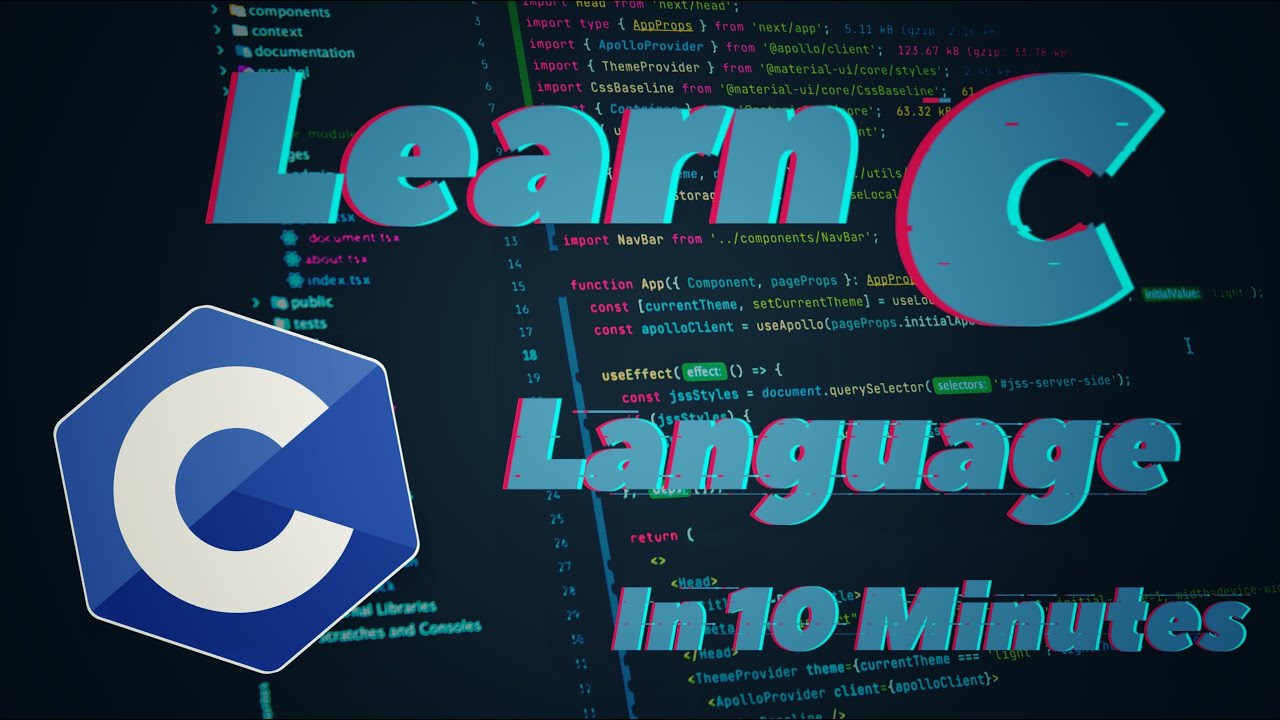C_72 Pointers in C- part 2 |Address of(&) and Indirection (*) operator in Pointers I C Programming
Summary
TLDRThe video script discusses fundamental concepts of pointers in the C programming language. It covers basic aspects such as what a pointer is, how to declare and initialize pointers, and the use of address and reference operators. The script aims to clarify common confusions among students regarding pointer operations and emphasizes the importance of understanding pointers for effective programming. It also touches on the size of pointers, which depends on the machine architecture, and provides practical examples to illustrate pointer usage.
Takeaways
- 😀 The video discusses the basics of pointers in C, including what a pointer is and how to declare and initialize them.
- 🔍 The address-of operator '&' and the dereferencing operator '*' are introduced as special operators used when dealing with pointers.
- 👉 Pointers are used to store the address of any variable, and the video explains how to use pointers to access and manipulate data indirectly.
- 📚 The size of a pointer depends on the machine and compiler, with 2 bytes for a 16-bit machine and 4 bytes for a 32-bit machine.
- 💡 The video clarifies the concept of pointer-to-pointer, where a pointer can point to another pointer, and demonstrates how to take the address of a pointer.
- 🔑 The use of the assignment operator '=' with pointers is explained, showing how to assign the address of one variable to another.
- 🔄 The precedence of assignment and comma operators is discussed, indicating that assignment takes precedence over the comma in expressions.
- 📝 The video includes examples of using pointers in code, illustrating how to print the value of a variable using pointers and how to increment pointers.
- 🔍 The difference between using the address-of operator to get the address of a variable and using the dereferencing operator to get the value at an address is highlighted.
- 📌 The concept of pointer arithmetic is briefly touched upon, showing how to add or subtract from a pointer to point to consecutive elements.
- 📑 The video script also covers the use of pointers in functions, demonstrating how to pass the address of a variable to a function to modify its value.
Q & A
What is the main topic of discussion in the provided script?
-The main topic of the script is discussing pointers in the C programming language, including their basics, how to declare them, and how to use special operators with pointers.
What is a pointer in C?
-A pointer in C is a variable that stores the memory address of another variable. It is used to directly access and manipulate the value at a specific location in memory.
How do you declare a pointer in C?
-You declare a pointer in C using the asterisk (*) symbol before the variable name, followed by the data type, like `int *p;` which declares 'p' as a pointer to an integer.
What is the address-of operator in C?
-The address-of operator, represented by the ampersand (&) symbol, is used in C to obtain the memory address of a variable.
What is the dereference operator in C?
-The dereference operator, represented by the asterisk (*) symbol, is used to access the value at the memory address pointed to by a pointer.
What is the size of a pointer on a 16-bit and a 32-bit machine?
-On a 16-bit machine, the size of a pointer is 2 bytes, and on a 32-bit machine, it is 4 bytes.
What is the purpose of the comma operator in C?
-The comma operator is used to separate multiple expressions where the result of the first expression is discarded, and the second expression is evaluated and returned.
How does the assignment operator work with pointers?
-The assignment operator with pointers assigns the value of one pointer to another, effectively making the second pointer point to the same location as the first.
What is the difference between the address-of operator and the dereference operator?
-The address-of operator (&) gives the memory address of a variable, while the dereference operator (*) accesses the value stored at the memory address pointed to by a pointer.
Can you use pointers to access the value of a variable without knowing the variable's name?
-Yes, you can access the value of a variable indirectly by using its address stored in a pointer, even if you do not know the variable's name.
What is the output when you print the value of a variable using its pointer?
-When you print the value of a variable using its pointer, the output will be the actual value of the variable, not its address.
Outlines

This section is available to paid users only. Please upgrade to access this part.
Upgrade NowMindmap

This section is available to paid users only. Please upgrade to access this part.
Upgrade NowKeywords

This section is available to paid users only. Please upgrade to access this part.
Upgrade NowHighlights

This section is available to paid users only. Please upgrade to access this part.
Upgrade NowTranscripts

This section is available to paid users only. Please upgrade to access this part.
Upgrade NowBrowse More Related Video

C_81 Null Pointer in C | C Programming Tutorials

C_75 Pointers in C-part 5 | Pointer Arithmetic (Addition) with program

C_76 Pointers in C- part 6 | Pointer Arithmetic (Subtraction) with program

Learn C Language In 10 Minutes!! C Language Tutorial

Variabel Pointer

C_74 Pointers in C- part 4 | Pointer to Pointer (Double Pointer)
5.0 / 5 (0 votes)